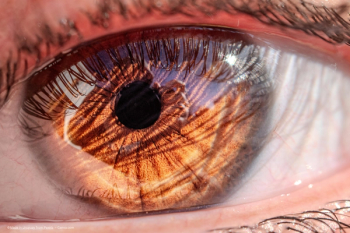
Glaucoma management: Seven 'sins' to avoid
A glaucoma specialist outlines the seven deadly sins of glaucoma management that, if avoided, can greatly reduce the number of people who go blind from glaucoma. These points include making sure that diagnosis occurs promptly and that patient compliance is stressed.
The data are daunting: about 80 million people have glaucoma and 11 million are blind in both eyes as a result. Considering these statistics, ophthalmologists should avoid committing the following seven capital 'sins' of glaucoma management because, in the vast majority of cases, blindness can be avoided, said Dr Remo Susanna Jr.
"These seven sins depict the most important points that should be assessed in glaucoma management," asserted Dr Susanna, professor and director of the Glaucoma Service, University of São Paulo, Brazil. "Being aware of the seven sins may save many, if not all, patients from blindness."
1. Glaucoma is not diagnosed. Studies vary on exactly how many cases of glaucoma are undiagnosed in the US, but the numbers are frighteningly high: the Baltimore Eye Survey, 56%; Proyecto VER, 62%; and the Los Angeles Latino Eye Study, 75%. By the time glaucoma is finally diagnosed, severe damage has already often occurred.
IOP, however, can be distorted by variations in corneal thickness and daily fluctuations, as well as the fact that IOP damage thresholds vary. In addition, patients may have ocular hypertension or normal-tension glaucoma.
"IOP is an important risk factor for glaucoma but not definitive evidence for the disease," Dr Susanna continued. "The measurement assumes that the corneal thickness is standard and can be inaccurate if the actual cornea is thicker or thinner than average. Glaucoma is an optic neuropathy. The optic nerve head and the retinal nerve fibre layer must be assessed to establish a diagnosis of glaucoma."
The main signs of glaucomatous optic neuropathy are an acquired optic pit, a disc haemorrhage, notch, a large cup and a small disc and a localized or diffuse defect of the retinal nerve fibre layer as well as cup/disc asymmetry >0.2, provided both discs have the same size. Dr Susanna explained that synechial or oppositional closure is missed when gonioscopy is not performed, so differentiation of angle-closure and open-angle glaucoma is not made.
2. The severity of damage is underestimated. Ophthalmologists should also not only rely on standard automated perimetry (SAP). Dr Susanna described a case with normal SAP results in the right eye and a very mild defect in the left eye. The bilateral IOP value was 20 mm Hg, but frequency-doubling technology showed that there was severe loss of magnocellular ganglion cells and of the retinal nerve fibre layer in both eyes.
"SAP may underestimate the magnitude of the loss," he explained.
A study in monkeys found that the ganglion cell loss approaches 50% before it is correlated with loss of sensitivity. Dr Susanna and colleagues reported that same correlation in humans (Br. J. Ophthalmol. 2005;89:1004–1007).
Glaucoma also affects the brain, with shrinkage of the lateral geniculate body and the visual cortex.
The importance of early diagnosis cannot be overemphasized, considering the effect on patients' quality of life, Dr Susanna stated.
"Even patients who have mild visual field loss report a lower quality of life," he said. "Visual field loss of 4 to 5 dB in the better or worse eye corresponds to a clinically meaningful difference in vision-related quality of life.
"Despite relatively good visual fields and visual acuity, reduced mobility has been reported," he continued. "Research [shows] that compared with control subjects, patients with glaucoma are three times more likely to fall and five times more likely to be involved in a car accident."
3. Reduced IOP is not enough. Reducing IOP may not prevent disease progression. The Early Management Glaucoma Trial (EMGT) reported that despite a 25% decrease in IOP, which translated to 5.1 mm Hg in that trial, 59% of patients had progression of glaucoma.
At the very least, Dr Susanna emphasized, the target pressure must be reached to try to stop progression.
In addition to the EMGT, other large population-based studies have underscored the importance of substantially lowering IOP.
In the Collaborative Initial Glaucoma Treatment Study, IOP reductions ranging from 35% to 48% (target IOP) resulted in no glaucoma progression.
The Advanced Glaucoma Intervention Study found that a mean IOP of 12.3 mm Hg and an IOP that was always below 18 mm Hg staved off glaucoma progression.
The Collaborative Normal-Tension Glaucoma Study reported that with a 30% decrease in IOP, the progression rate decreased from 60% to 20%.
Dr Susanna's rule of thumb to memorize target pressure is named 'the 2 mm Hg rule' - for early glaucoma, IOP below or equal to 18 mm Hg; for moderate glaucoma, IOP equal to or less than 16 mm Hg; and for advanced glaucoma, IOP equal to or less than 14 mm Hg.
Newsletter
Get the essential updates shaping the future of pharma manufacturing and compliance—subscribe today to Pharmaceutical Technology and never miss a breakthrough.












































